In Ouled Merzoug, a small earthen village near the Atlas Mountains of Morocco, a piece of land was offered by the community to the recently founded women’s association AFOM. They built a Women’s House in close collaboration with local women and workers: a place where women can share their crafts with the community and visitors. It is a meeting, working and learning place in the center of the village. They maximized the use of local and regenerative materials with traditional and contemporary building techniques.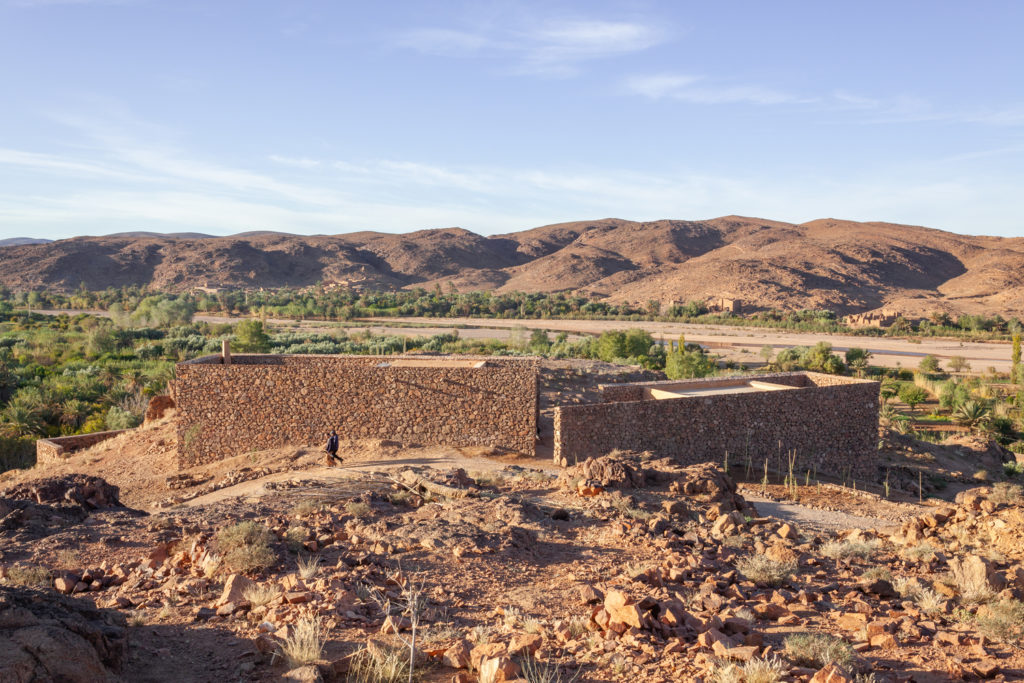 In 2018, a team of architects, urban planners, interior architects, and artists were brought together for the first edition of the postgraduate certificate Building Beyond Borders of Hasselt University.
In 2018, a team of architects, urban planners, interior architects, and artists were brought together for the first edition of the postgraduate certificate Building Beyond Borders of Hasselt University. 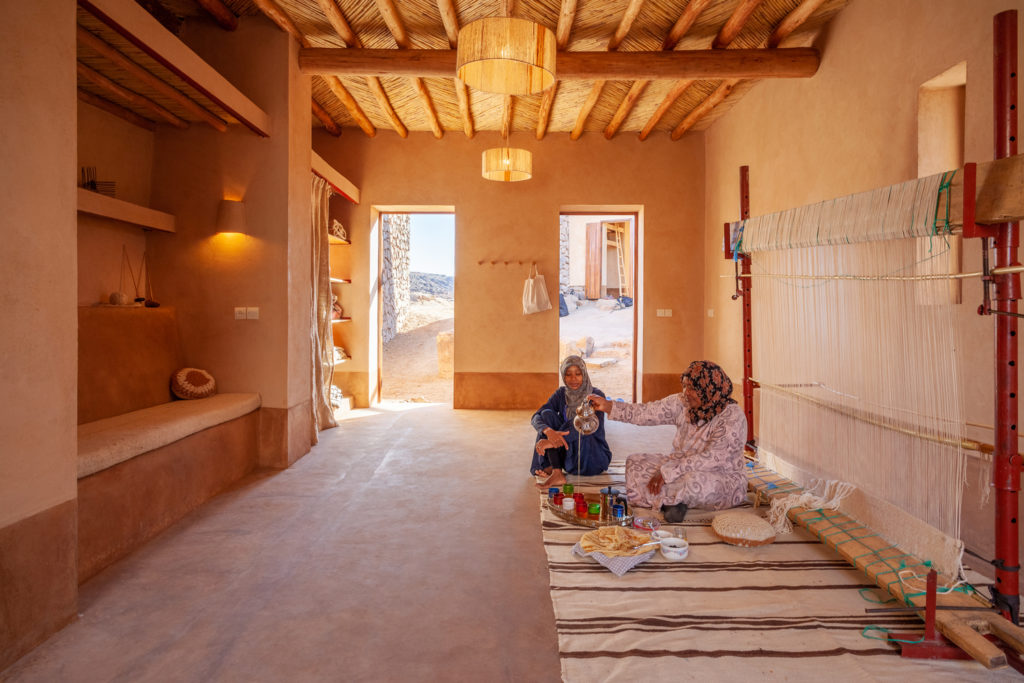
The features of the site were taken as starting points for the implementation and design of the Women’s House. Following the natural topography of the site, the Women’s House consists of two volumes, each positioned in a slightly different direction. The main facades at the ends of the building capture two beautiful panoramic views: sunrise over the mountains and sunset over the river.  The ‘atelier’ is a place for meeting, teaching and learning, spinning and weaving and the ‘boulangerie’ is a place where the women can enjoy sharing meals together, bake and sell homemade bread and pastries.
The ‘atelier’ is a place for meeting, teaching and learning, spinning and weaving and the ‘boulangerie’ is a place where the women can enjoy sharing meals together, bake and sell homemade bread and pastries. 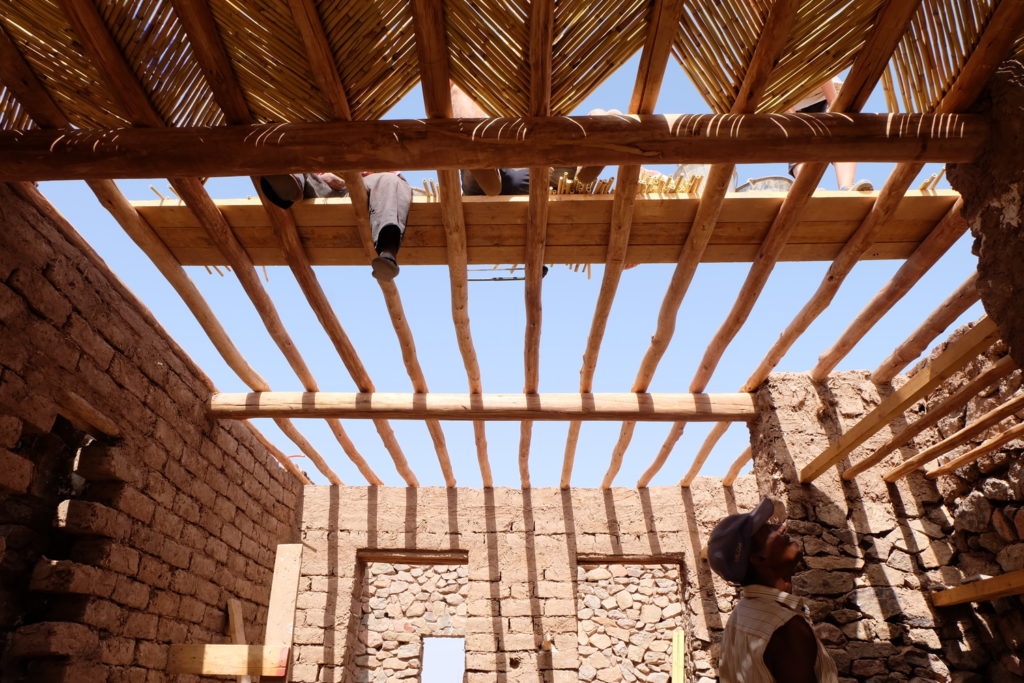 Maximizing the use of local and natural materials and minimizing the amount of construction waste, were taken as base principles in this project. For the envelope of the building granite stones were dug from the surrounding hills. The inner walls are made out of adobe bricks. The roof span of the building is based upon the maximum length of the eucalyptus beams that can be found at the local market; the ceiling is made out of a reed that grows locally. As for the finishing of the walls and floors, different mixes of local earth, river sand, lime, and straw are used.
Maximizing the use of local and natural materials and minimizing the amount of construction waste, were taken as base principles in this project. For the envelope of the building granite stones were dug from the surrounding hills. The inner walls are made out of adobe bricks. The roof span of the building is based upon the maximum length of the eucalyptus beams that can be found at the local market; the ceiling is made out of a reed that grows locally. As for the finishing of the walls and floors, different mixes of local earth, river sand, lime, and straw are used. 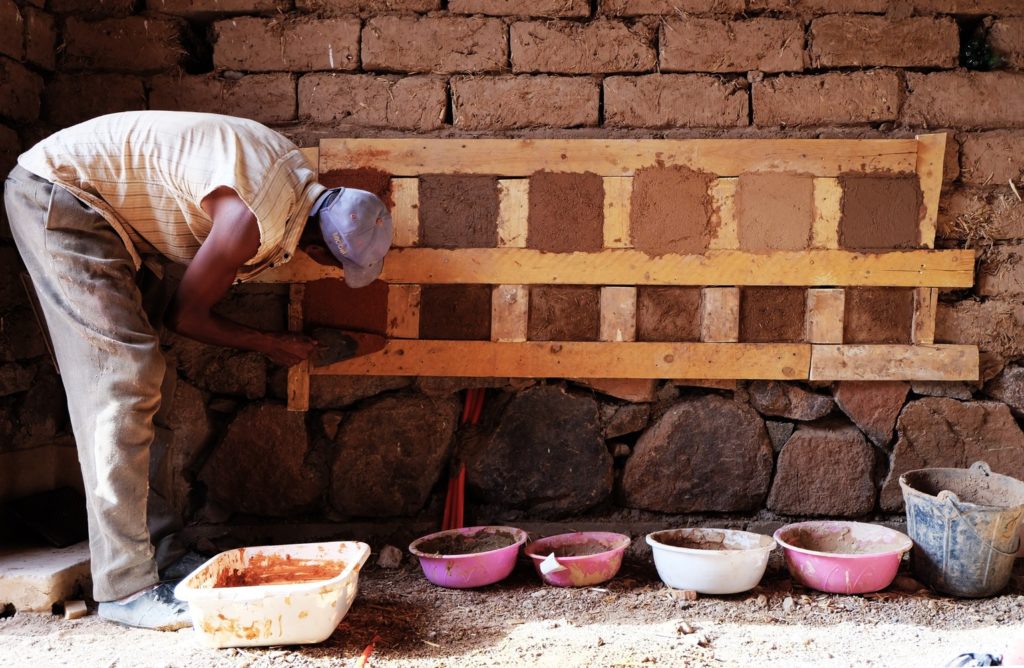 The women designed and wove the curtains and helped with building the cob oven in the garden of the bakery. The doors and eucalyptus beams under the kitchen counter were made by local woodworkers. The exterior lamps and ceramic objects were shaped together with the local potter.
The women designed and wove the curtains and helped with building the cob oven in the garden of the bakery. The doors and eucalyptus beams under the kitchen counter were made by local woodworkers. The exterior lamps and ceramic objects were shaped together with the local potter.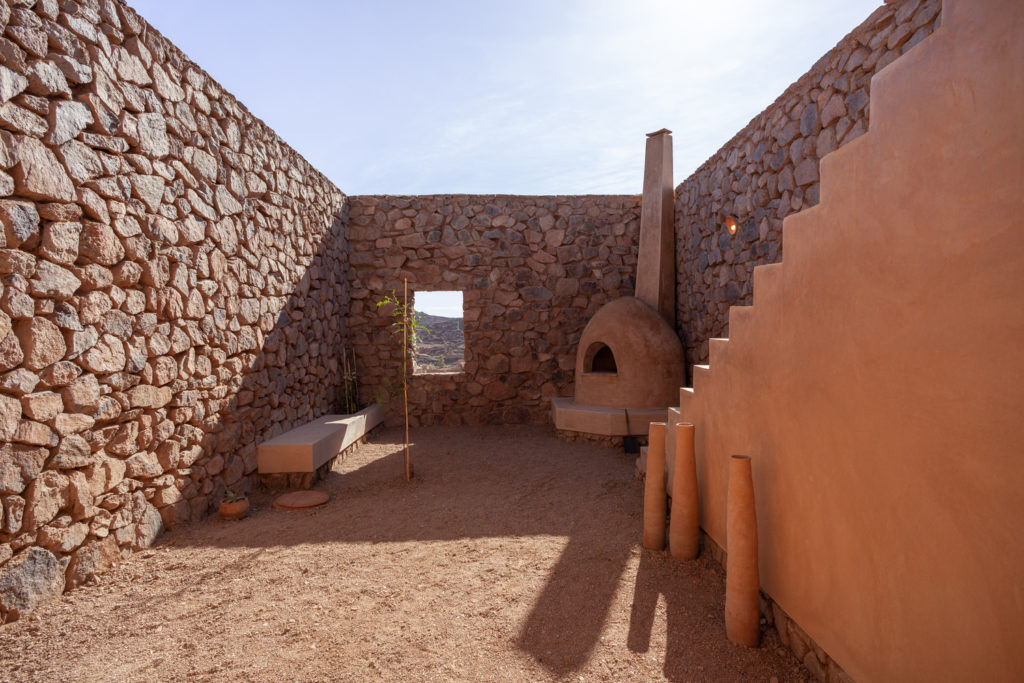
Next to the building, in the gully, a forest garden greens the formerly naked rocks. This garden brings biodiversity and shade to the hill site and aims to be a new public space for the village. Next to that, the terraced garden and its dry-stacked walls slow down the running of rainwater. This results in better water infiltration and a reduction of the amount of eroded material flushing towards the main road.
You can read the original article at www.archdaily.com

How beautiful!